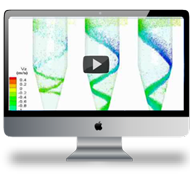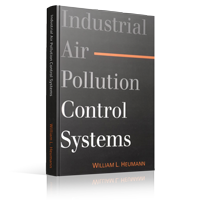High-Efficiency Cyclone Troubleshooting
- Home
- High-Efficiency Cyclone Troubl...
High-Efficiency Cyclone Troubleshooting
SYMPTOMS:
Design basis is wrong
SOLUTION
- Verify specified design conditions and vendor performance predictions are correct
- If higher ΔP can be provided by the system air mover and the collection efficiency is close to the desired level, modify high-efficiency cyclone inlet and/or outlet to increase the velocity
- Replace the high-efficiency cyclone with a better high-efficiency cyclone
Gas leakage into the cyclone
SOLUTION
- Check and repair any leaks or holes.
- Check to make sure flange connections are properly gasketted and tight
- Check and repair feeder valves for proper operation and gas tightness.
Inlet or outlet ductwork is improperly designed
SOLUTION
- Check and repair inlet and/or outlet ductwork if any flow disturbance is induced into the high-efficiency cyclone
There is an internal obstruction
SOLUTION
- Insure that any access doors are flush and smooth
- Insure that there are no instruments or probes sticking into the high-efficiency cyclone flow stream
- If the high-efficiency cyclone is lined, check for and repair any major erosion that causes sharp edge disturbance to the flow stream
- If plugging is occurring see item below
Feeder valve is sized improperly for the particulate loading and density
SOLUTION
- Resize and replace the feeder valve
Cyclone discharge diameter or dipleg is too small for the particulate loading and apparent density
SOLUTION
- Redesign and replace lower sections
Dipleg plugs
SOLUTION
- Add dipleg purges if problem is caused by poor aeration (although the introduction of purge gas itself can reduce collection efficiency this is preferable to 0% collection resulting from a plug).
- Check and repair dipleg discharge valve
Particulate build up on surfaces
SOLUTION
- If caused by condensation, insulate and/or heat trace
- Consider non stick coatings or polished surfaces
- Periodic vibration and/or air cannon
- Replace with a cyclone with greater internal clearances
- Provide easy access for cleaning and maintenance
Cyclone inlet velocity is too high
SOLUTION
- Replace the high-efficiency cyclone or modify the inlet so that the inlet velocity is as low as possible (just above the saltation velocity at the minimum flow condition)
- Reduce the gas flow rate if possible
Particulate is abrasive
SOLUTION
- Use the lowest possible inlet velocity
- Make the high-efficiency cyclone out of more abrasion resistant construction. If a combination of corrosion is occurring with erosion then the materials of construction must first be corrosion resistant since virtually all materials will abrade away rapidly when in an oxidized state
- Use high-efficiency cyclones that have larger diameters
- Design the installation and high-efficiency cyclone itself so that worn parts can be replaced and/or repaired as economically as possible
Design basis is wrong
SOLUTION
- Verify specified design conditions and vendor performance predictions are correct
- If the high ΔP is not causing any real problem, leave it alone. The high-efficiency cyclone should be providing higher collection efficiency than specified
- Modify air moving portion of the system to accommodate higher ΔP
- Enlarge the high-efficiency cyclone inlet or outlet pipe to reduce velocity (note this will reduce the high-efficiency cyclone collection efficiency)
- Replace the high-efficiency cyclone
Excess air leaking into upstream ductwork
SOLUTION
- Repair ductwork
Design basis is wrong
SOLUTION
- Verify specified design conditions and vendor performance predictions are correct
- If the low ΔP is not causing any real problem, leave it alone.
- If the high-efficiency cyclone efficiency is too low by a small margin, modify the inlet and/or outlet to increase velocity
- Increase the gas flow rate to the high-efficiency cyclone
Leaks into the cyclone
SOLUTION
- Repair
Internal obstruction
SOLUTION
- Inspect and clear or repair

